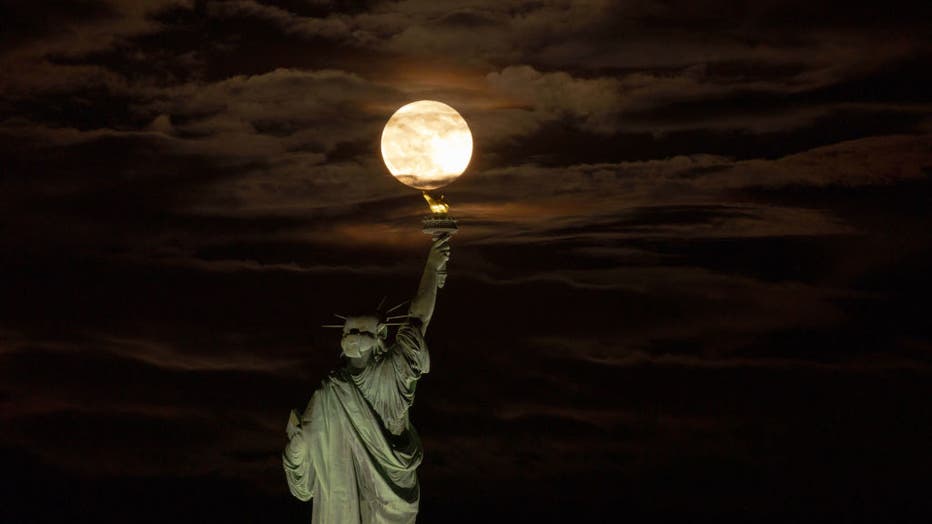Partial lunar eclipse and supermoon combo coming: When to see it

What is a supermoon?
A supermoon is when the moon is either full or new and is at its closest orbit with the Earth. They happen several times a year and can have different names depending on the month.
NEW YORK - Stargazers, here's your chance to catch the next partial lunar eclipse and supermoon both at the same time.
When is the partial lunar eclipse and supermoon?
The spectacle will be visible in clear skies across North America and South America on Tuesday night and in Africa and Europe on Wednesday morning.
What is a partial lunar eclipse?
A partial lunar eclipse happens when the Earth passes between the sun and moon, casting a shadow that darkens a sliver of the moon and appears to take a bite out of it.
RELATED: What is the annular ‘ring of fire’? This next eclipse happens in less than a month
The Earth, moon and sun line up to produce a solar or lunar eclipse anywhere from four to seven times a year, according to NASA. This lunar eclipse is the second and final of the year after a slight darkening in March.
In April, a total solar eclipse plunged select cities into darkness across North America.

Video shows progression of partial lunar eclipse in Indiana
Nathan Pace posted footage on Nov. 19, 2021, of the longest partial lunar eclipse in hundreds of years from his vantage point in Linton, Indiana. Credit - Nathan Pace via Storyful
What is a supermoon?
Since the moon will inch closer to Earth than usual, it'll appear a bit larger in the sky. The supermoon is one of three remaining this year.
"A little bit of the sun’s light is being blocked so the moon will be slightly dimmer," said Valerie Rapson, an astronomer at the State University of New York at Oneonta.

The Blue Sturgeon Supermoon rises out of clouds behind the Statue of Liberty in New York City on August 19, 2024, as seen from Jersey City, New Jersey. (Photo by Gary Hershorn/Getty Images)
Do I need eye protection?
No special eye protection is needed to view a lunar eclipse. Viewers can stare at the moon with the naked eye or opt for binoculars and telescopes to get a closer look.
How do I watch it?
To spot the moon’s subtle shrinkage over time, hang outside for a few hours or take multiple peeks over the course of the evening, said KaChun Yu, curator at the Denver Museum of Nature and Science.
"From one minute to the next, you might not see much happening," said Yu.
When is the next eclipse?
For a more striking lunar sight, skywatchers can set their calendars for March 13. The moon will be totally eclipsed by the Earth’s shadow and will be painted red by stray bits of sunlight filtering through Earth’s atmosphere.

